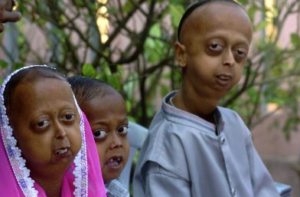Rare diseases: EU and US collaborate to boost development of therapies

Last Updated on October 1, 2016 by Joseph Gut – thasso
September 30, 2016 – This is very good news for patients suffering from any form of a rare disease. The European Medicines Agency (EMA) and the American Food and Drug Administration (FDA) have engaged in a joint effort to boost development of medicines for rare diseases. For that purpose, they have set up a new ‘cluster’ on rare diseases to share experiences and best practices on each other’s regulatory approach to the development of medicines for these diseases.
 While rare diseases are estimated to affect 30 million people in the European Union and approximately the same number in the United States, each disease individually concerns a limited number of patients. Therefore, global collaboration in this area is particularly important to ensure that the limited number of studies that can be conducted, due to the small populations, can benefit all patients regardless of where they live.
While rare diseases are estimated to affect 30 million people in the European Union and approximately the same number in the United States, each disease individually concerns a limited number of patients. Therefore, global collaboration in this area is particularly important to ensure that the limited number of studies that can be conducted, due to the small populations, can benefit all patients regardless of where they live.
The agencies will exchange information on various aspects of the development and scientific evaluation of medicines for rare diseases. These include topics such as:
- the design of clinical trials in small populations and the use of statistical analysis methods;
- the selection and validation of trial endpoints, i.e. target outcomes of a trial;
- preclinical evidence to support development programmes;
- the design of post-marketing studies, in particular in the context of early access mechanisms such as EMA’s conditional marketing authorisation and FDA’s accelerated approval;
- risk management strategies for long-term safety issues with medicines for rare diseases.
The cluster will provide a forum for confidential exchange of draft documents, policies under development, and more detailed information supporting the scientific basis for decision making on medicine development.
The existing EMA/FDA ‘cluster on orphan medicinal products’ will continue to focus on information sharing and collaboration on orphan designation and exclusivity, the agencies’ mechanisms to encourage the development of medicines for rare diseases.
The first meeting of the rare diseases cluster took place by teleconference on 23 September 2016. The cluster will initially meet once a month via teleconference and will be chaired jointly by FDA and EMA.
The creation of this cluster is the latest step in EMA’s and FDA’s wider objective to expand and reinforce international collaboration.
The clusters established by EMA and FDA focus on areas where the parties involved could benefit from an intensified exchange of information and strengthened collaboration. The currently existing EMA/FDA clusters discuss issues related to patient engagement, biosimilars, orphan medicines, medicines to treat cancer, medicines for children, and pharmacovigilance, among other topics.
The information exchange is covered by the confidentiality arrangements between the two regulators.
Read also here about the genetics of rare diseases and here on rare diseases and orphan drugs. One should also be aware that the term global collaboration, as used above in this context, does not really stop at EMA and FDA. It would simply be highly desirable, if in fact regulatory authorities from every country worldwide, would participate in this cluster effort. This, because there are worldwide so many patients suffering from rare diseases who do not even know what their condition might be and who have no chance of access to existing or emerging therapy options. A truly glocalized cluster effort could help these patients enormously.






